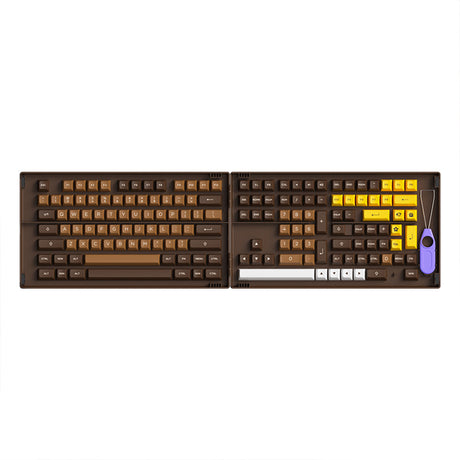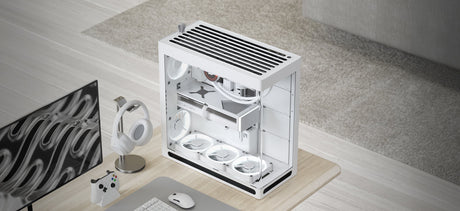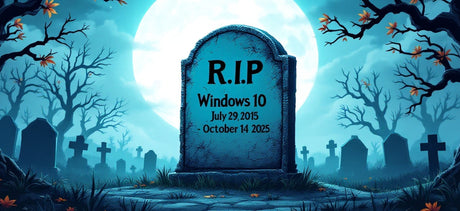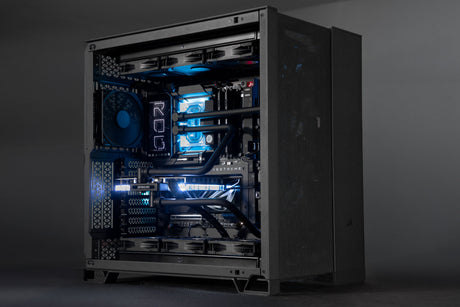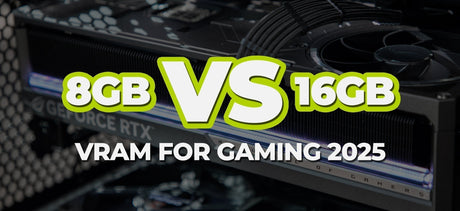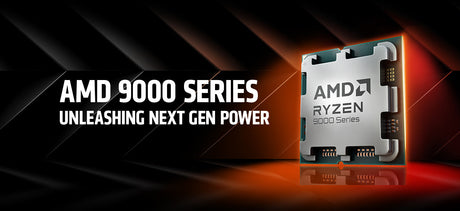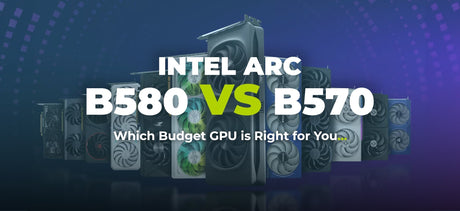Following on from our previous discussion about picking the perfect size mechanical keyboard which you can read here, this blog will be exploring the part of a keyboard which you actually interact with - the keycaps! From size to shape to colour to material, we will cover a bunch of the most important factors when it comes to understanding what keycaps to buy if you are looking for a new set, or just what keycaps come with a prebuilt mechanical keyboard. Keycaps are usually the most cost effective way to change the appearance, feel, or sound of a keyboard, and so it’s a great starting point for users who are new to the world of mechanical keyboards!

Keychron Q3 QMK Carbon Black - OSA Profile PBT Doubleshot Keycaps
A good quality set of keycaps might not sound like much, but they can make a huge difference in terms of the typing or gaming experience when using your keyboard alongside the obvious visual flair or minimalist aesthetic they add. There are actually quite a few different factors that can influence the type of keycaps that you might want to consider, so let’s start with the basics - the materials.
These days the most common materials for keycaps to be manufactured from are ABS and PBT. Generally speaking, most budget oriented keyboards in the mainstream market will use Acrylonitrile Butadiene Styrene (ABS) keycaps as they are cheaper to manufacture. ABS is highly durable and resistant to cracking, which makes it a great budget material for making keycaps out of. Typically ABS keycaps will have a smooth texture which can initially be nice to the touch but over time cheaper ABS keycaps tend to turn slick and shiny after prolonged use, and the lettering on ABS keycaps is prone to fading over time.
ABS keycaps are commonly manufactured through injection mounding to form the shape of the keycap, and then the legend is printed, marked, or engraved on the top. Although generally ABS keycaps are considered a cheaper and less premium option, there are more expensive higher end ABS keycap sets which are manufactured with thicker plastic and custom designs that can be highly attractive. ABS keycaps are also known to have a quieter sound profile compared to PBT keycaps, and come in a wider range of colours if that is something that is important to you.

Corsair PBT Doubleshot Keycaps with Clear Lettering
PBT keycaps are the other common material that you will find keycaps made out of. Polybutylene Terephthalate (PBT) is more expensive than ABS, and so more pre-built high end mechanical keyboards will come with PBT keycaps preinstalled. PBT keycaps are known for their matte textured surface, as well as their resistance to wearing over time and becoming slick or shiny.
Many users of PBT keycaps will know that they have a louder and more crisp sound profile than ABS keycaps which can be nice. They are manufactured in the same way as ABS most of the time through injection moulding and come in a (although slightly more limited) variety of colours. There are also other materials which are less commonly used such as POM (Polyoxymethylene) jelly which makes for a very unique and interesting typing feel and look, but we won’t look too much into those as they are much less common than ABS or PBT.

Painted Etched ABS Keycaps (left) vs Doubleshot PBT Keycaps (right)
Now that we have a good understanding of what the keycaps are made of, let’s talk production methods. Depending on what type of keycaps you are looking for, the production method usually has the most impact on how you want the lettering of your keyboard to look. Plain keycaps are obviously more simple in terms of manufacturing, adding lettering, shine through components and designs on the keycaps increases the complexity. Most keyboards you will see on the market today in the entry to mid range will have either standard injection moulded ABS keycaps, or possibly doubleshot injection moulded ABS keycaps for boards with lighting that shines through the lettering.
Printing lettering on the keycaps is the most straightforward way to have letters on a keycap. The cheapest way to do this is pad printing, which uses pads dipped into ink to mark the lettering on the keycaps. This is common in office keyboards, and most people will have experienced the printed pads on the caps wearing off after a period of time to leave a blank cap.

Painted Etched ABS Keycaps (left) vs Doubleshot PBT Keycaps (right)
Doubleshot injection moulding fuses 2 layers of plastic together to form the keycap. This is very common when manufacturing keycaps with clear lettering for light to shine through. Both ABS and PBT keycaps are manufactured in this way, and this will account for the vast majority of keycaps on mainstream gaming keyboards today. Since there are 2 separate layers of material which make up the cap and the lettering, the lettering never fades on doubleshot injection moulded keycaps.
Laser etching is next up on the list, and this is a process where a backlit keycap is coated with a layer of dye before a laser etches the lettering into the keycap to allow light to shine through. Obviously this is a common technique used to produce backlight supported keycaps, and the lettering can be felt on the surface of the keycaps which some users prefer. This process is sometimes known as ‘charring’, as the laser can char the lettering into the keycaps - usually this is for lighter shade keycaps with a dark legend from the char.
The final method of production we will look at is dye sublimation. This process uses laser engraving to produce the legends, then the lettering is filled with a dye. Dye sublimation keycaps are typically known for their intricate designs such as on our range of Varmilo or Akko keyboards. Varmilo's 5-sided dye-sublimation process allows them to produce intricately designed keycaps that have a truly unique look when installed.

Varmilo 5-Sided Dye-Sublimation Keycaps
The last property of a keycap set we will explore today is the profile. Profile refers to the shape and height of the keycaps, and by swapping to a different profile of keycaps you can significantly alter the typing feel of your keyboard. Below is a handy diagram showing the different shape and height of a range of keycap profiles row by row (credit: keycaps.info). The most common keycap profiles on the market today for mechanical keyboards are OEM, Cherry, SA, DSA, and XDA.
A few of the more common shapes for keycaps are convex/rounded, concave, angled, or flat. As you can probably tell with both the shape and height, your decision will mostly come down to personal preference so testing out different types of keycaps is your best bet to determine what feels the best for you. Our showroom has a range of keyboards with some different unique keycap profiles available such as the ASA profile keycaps on some of our Akko mechanical keyboards.

Side view OEM profile (left) vs ASA profile (right)

Keycap Profile Comparison Chart - Credit: keycaps.info
With that said, we also have a range of keyboards with different sizes, switches, and other cool features which you are able to try out in our showroom, and if you have any other queries our sales team can help you pick out the right set of keycaps for you!


